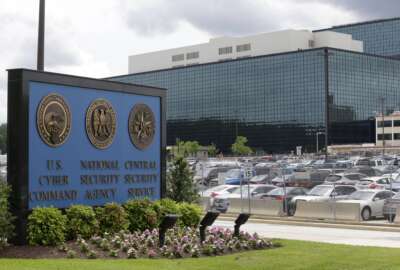Intel agencies look to build skills through public-private talent exchange
The intelligence community's "public-private talent exchange" will start with an initial cohort of IC officers doing rotational assignments at companies in the...
Intelligence agencies are eyeing increased job flexibilities and more educational opportunities for the workforce, including through a new talent exchange that is already sending some intelligence officers to do assignments at companies in the space sector.
The intelligence community’s “public private talent exchange” got off the ground this fall after years of development. The program sends IC officers on rotational assignments to private sector companies to develop deeper expertise and skills in specific technology and policy areas. The assignments can last anywhere between three and 12 months.
An initial cohort of officers will spend time at space companies, Cynthia Snyder, the assistant director of national intelligence for human capital, confirmed in an interview on Inside the IC. Other focus areas for the program include artificial intelligence and machine learning; finance and economic security; data science; and human capital.
“So when they come back, they’ll be able to bring those new skill sets back to continue to infuse into our work place,” Synder said.
In addition to sending IC officers to the private companies, the program will also allow intelligence agencies to host individuals in the private sector on rotational assignments. In October, the program announced opportunities for private sector employees to fill assignments working on space-related issues for the Director of National Intelligence and the National Geospatial-Intelligence Agency.
The exchange is part of a broader shift underway across the intelligence community to allow for more workplace flexibilities and educational opportunities. Snyder said reskilling and upskilling is critical as agencies grapple with new technologies and global challenges.
“Our leadership recognize the importance of investing in our workforce,” she said. “So yes, we may have to take someone out of the workplace for a short period of time to advance their skills, but when they come back, they’re bringing so much more.”
In addition to investing in its current workforce, intelligence agencies also see these flexibilities as potentially enticing to the next-generation of intelligence officers. Generation Z, or those born between the late 1990’s and the early 2000’s, are an increasing component of the workforce.
“They’re not going to stay in one place for 30 years,” Snyder said. “We recognize that they will be looking for opportunities to broaden, to continue to broaden and expand and grow and we welcome that because our desire is we will make their experience with us the best experience.”
While intelligence agencies are known for being discreet, the Office of the Director of National Intelligence is trying to expand awareness, or “exposure” as Synder calls it, about job opportunities within the intelligence community.
Last year, ODNI worked with the Office of Personnel Management to launch IntelligenceCareers.gov. The main website has garnered more than 1 million visitors, Snyder said, while about half of those visitors went on to explore more opportunities at microsites for specific agencies.
ODNI also recently established a commercial “virtual recruiting capability,” Snyder said, that 16 of the 18 intelligence components are using today. It allows them to reach both individuals and schools virtually to schedule interviews and events. It also allows the participating agencies to pull from a repository of resumes.
“Whatever we can do to continue to expose and make people aware of who we are, what we do,” Snyder said.
Meanwhile, the security clearance process remains a major challenge for recruiting new people into the intelligence community. Many people will often consider other job opportunities instead of waiting out a background investigation and clearance decision. A recent RAND report found many recruits are often left in the dark about where they stand in the clearance pipeline.
But Snyder said ODNI is trying to streamline that part of the recruiting, integrating the human capital, security, and medical suitability workflows under one system. The system would provide the applicant and the hiring agency with notifications throughout the process.
“So we’re connected, talking the entire time,” Snyder said. “And once that process is complete, then it automatically notifies us that we’re ready to finalize that offer for the employee. Just integration, providing more automation is an area that we believe will help us strengthen that process with our security partners.”
Copyright © 2025 Federal News Network. All rights reserved. This website is not intended for users located within the European Economic Area.
Follow @jdoubledayWFED






